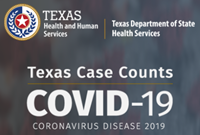?If you thought *Summer* would never end, especially since we are well into
*Fall*, you will be as happy as I am to tell you by next Thursday we will
have dropped from the 90/65 range to 74/52? range of temperatures. Light
jacket/sweater weather?....Real Football temps!
We have an Arctic cold front building and heading in our direction bringing
us a Normal series of Fall temps. We will see some light rain with the
fronts entry into Deep East Texas.
For the third day in a row, the Atlantic had no named tropical cyclones on
Tuesday. Such a statement wouldn’t seem unusual had it not been for the
turbo-charged period from late August through September. This frenetic
interval produced six hurricanes, including five major hurricanes and four
that reached Category 4 or 5 strength. In Atlantic data going back to 1851,
September set a record for the most amount of accumulated cyclone energy in
any month—175, beating out 155 from September 1926—according to Phil
Klotzbach (Colorado State University).
Klotzbach also reports these records set in September:
Number of named-storm days: 53.25 (old record 52.25, Sept. 2004)
Number of hurricane days: 40.25 (old record 34.50, Sept. 2006)
Number of major hurricane days: 18 (old record 17.25, Sept. 1961)
Each of these tallies includes the total number of days at each strength
level for each storm of the month.
Light shear, toasty waters means we need to keep a close watch on a
tropical low developing in the caribbean off Honduras. It looks like it
will develop into a named storm as it moves into the warm Gulf and right
now looks to make landfall somewhere between Louisiana and Florida. Global
models have been hinting at this possibility for days, and it’s a
climatologically favored progression.
I am setting up another SkyWarn Training & Certification class and hope to
have a date from the Shreveport folks today or tomorrow. The past 2-3
years has involved a number of changes in emergency and first response
personnel in the Deep East Texas area. And, several individuals who could
not attend other sessions we have held have requested the additional
training session to be held. This will be a combined Basic & Advanced
session.
A reminder: it is NOT to make you a Storm Chaser. Our emergency
first responders like fire departments, law enforcement, ambulance
services, ham operators, emergency coordinators, electric, gas, and water
personnel are the prime audience as they are the feet on the street during
severe weather related emergencies. The Storm Spotter training will be open
to all who wish to participate from San Augustine, Shelby, Sabine, Jasper,
Angelina, Nacogdoches and other counties in the Deep East Texas Region. San
Augustine is a good central point for those not local to partake of the
training.
.png)
.jpg)



 Click For Louisiana
Click For Louisiana
